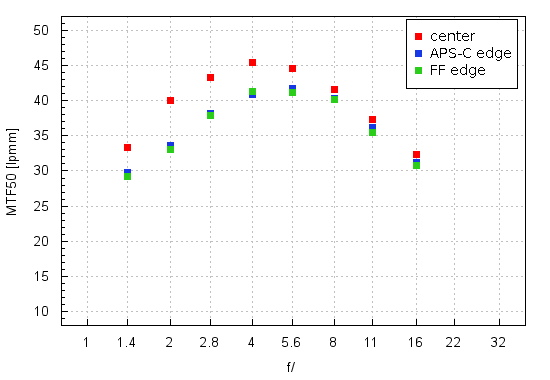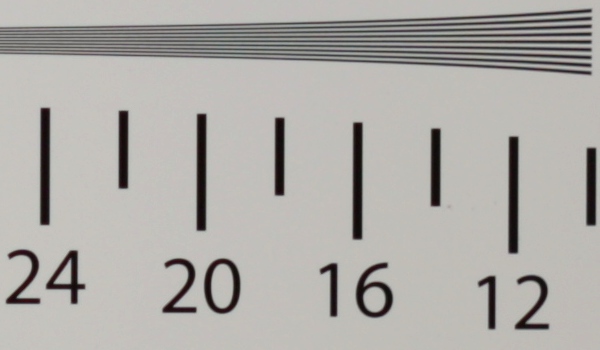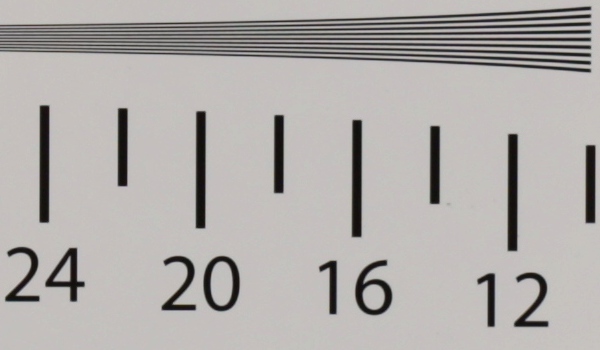Carl Zeiss Milvus 50 mm f/1.4
4. Image resolution
Let’s check how the tested lens compares here – its results in the frame centre, on the edge of the APS-C/DX and on the edge of full frame presents a graph below.

Please Support UsIf you enjoy our reviews and articles, and you want us to continue our work please, support our website by donating through PayPal. The funds are going to be used for paying our editorial team, renting servers, and equipping our testing studio; only that way we will be able to continue providing you interesting content for free. |
- - - - - - - - - - - - - - - - - - - - - - - - - - - - - - - - - - - - - - - - - - - - - - - -
For obvious reasons we wanted to compare the performance of the tested lens to the performance of Zeiss Otus 1.4/55; still you must remember that the Otus was tested on the Nikon D3x. It was able to break the resolution record on that camera, exceeding a level of 50 lpmm. As the MTFs produced by the EOS 5D MkIII are about 1-2 lpmm lower than those from the Nikon D3x we can safely assume that the Otus 1.4/55 attached to the Canon wouldn’t have any problems with reaching near 48 lpmm, like the Otus 1.4/85. An excellent result of the Sigma A 1.4/50, which on the 5D MkIII got to 47.4 lpmm should also be reminded here.
Milvus is weaker than those lenses because its maximum result by f/4.0 amounts to 45.4 lpmm; still that resolution level remains excellent even if lower than that of the Otus (which is completely understandable) and worse than the best result of the significantly cheaper Sigma (which is a bit less understandable).
The strength of Milvus lies elsewhere, though. Firstly, already at the maximum relative aperture it is able to provide useful images with the MTFs reaching almost 34 lpmm. It is a result slightly lower than that of the Sigma but the differences border the measuring error level. Secondly, let’s look at the edge of the frame.
I admit it happens for the first time in our tests that the results on the edge of the APS-C/DX sensor and full frame are, to an accuracy of the measuring error level, identical across the whole aperture range. What’s more important it is not the full frame edge which drags the MTFs down, quite the opposite is true, it evens the results on the edge of the APS-C/DX . As a result already at the maximum relative aperture these values amount to almost 30 lpmm so in fact are fully useful! Neither the Otus 1.4/55 nor the Sigma Art 1.4/50 by f/1.4 reached full usefulness on the edge of full frame.
The situation only improves on stopping down. Near f/4.0-5.6 the image on the very edge of the big full frame detector is simply sensational as the MTFs noticeably exceed 40 lpmm a noticeably better level than that of the Otus and the Sigma. We haven’t seen such a good performance on the edge of the frame for a very long time.
The idea behind the Milvus 1.4/50 becomes clear now. It is a lens which was supposed to provide an excellent image quality in the frame centre but without any record-breaking excesses, those are within the scope of the Otus devices. Instead you get a brilliant performance on the edge of the frame - in the range from f/2.8 to f/8.0 the images are excellently sharp practically across the frame. Mind you you can have it all for a price two times lower than the price of the Otus.
At the end of this chapter, traditionally, we present crops taken from photos of our resolution testing chart, saved as JPEG files along with RAW files we used for the analysis above.
| Canon 5D Mk III, JPEG, f/1.4 |
 |
| Canon 5D Mk III, JPEG, f/4.0 |
 |






